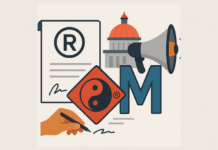A Complete Guide to Designing a Branding Logo for Your Business
Your logo is doing far more work than just decoration. It represents your identity, your promise, your story. Add that to the fact that the process sounds too technical, logo design might sound intimidating. Well, you might feel overwhelmed, but it doesn’t need to be that way.
In this article, we’ve compiled the most important things to note when creating a branding logo, both from the business perspective and from a technical standpoint. By the end, you’ll feel confident in the decisions you’ll make if you’re a graphic designer, or at least know what to ask from your graphic designer.
Why a Logo Matters
A logo is often the first impression people have of your brand. Research suggests that logos influence whether a person perceives a business as trustworthy, professional, or innovative.
Half of consumers say they are more likely to purchase from a brand with a recognisable logo. Colour can boost brand recognition by up to 80%. If people dislike a logo, 60% would avoid buying from that company.
Core Principles of Strong Logo Design
When designing a logo, these guiding principles act like your compass. Keep on note that these points will relate to both local branding and luxury branding.
Simplicity & Versatility
A great logo works in many contexts, from billboards to mobile screens, in black and white, embroidered on fabric, or as a tiny favicon. Minimal, clean designs are still very much in trend.
Memorability
You want people to recall your mark. That’s why many iconic logos are simple yet distinctive.
Relevance (to your brand)
Colour, shape, style, and even motion should match your brand’s personality and sector.
Flexibility & Responsiveness
Logos now often adapt (simplify or change) depending on where they appear: on mobile, in apps, as animations, or on print.
Timelessness
Trends are helpful, but don’t let your logo feel dated too soon. Balance modern touches with a core that can age well.
Step-by-Step Instruction on Creating a Branding Logo
Here’s a roadmap you (or your designer) can follow, from concept to final execution.
| Phase | What You Do | Tips & Outputs |
|---|---|---|
| Discovery & Strategy | Define your brand’s vision, mission, values, audience, and competitive landscape. | A brand brief or guideline document. |
| Moodboarding & Inspiration | Collect logos, images, textures, colour swatches you like, across and outside your industry. | Visual references that reveal your aesthetic direction. |
| Sketching & Concepting | Start rough: pencil sketches, thumbnail ideas. Explore variations. | 20–50 quick sketches; don’t judge too early. |
| Digital Drafts | Use vector tools (e.g., Illustrator) to render promising ideas. Try black-and-white first before adding colour. | Several draft versions. |
| Refinement & Testing | Check scaling, legibility, how it looks on various media (mobile, print). Test with real users or stakeholders. | A refined set of logo options with mockups. |
| Finalisation & Variants | Prepare variations: full logo, icon only, monochrome, reversed, small-size versions. | Logo package (SVG, PNG, EPS) with usage guidelines. |
| Trademark & Protection | Register the logo (if possible in your jurisdiction). In many places, that takes months. | Legal registration, brand usage rules. |
Note: When testing, show logos in real-world contexts (on shirts, signage, business cards). Many good logos fail because, in practice, they don’t scale or translate well.
Common Mistakes & Pitfalls to Avoid
Here are some common mistakes to avoid when making a logo from a professional that’s collaborated with Singaporebrand:
- Overcomplicating: Including too many elements or details can make the logo unnecessarily bulky and unclear at small sizes.
- Chasing fads blindly: Focusing solely on trends isn’t effective, as it may date your logo too quickly. Use trends, don’t be ruled by them.
- Neglecting flexibility: A logo must adapt based on the background, lighting, and similar aspects. If it’s rigid, you’ll face issues in digital applications.
- Ignoring brand strategy: A visually beautiful mark that doesn’t reflect your brand values confuses customers.
- Poor testing: Not previewing on real media (e.g., mobile, apparel, signage) could lead to unwelcome surprises at last.
Conclusion
Designing a branding logo is part art, part science, and part storytelling. It’s your visual handshake with the world. Done well, it becomes a lasting symbol of your brand’s promise.
Contact Singaporebrand if you need help with any information provided in this article.







